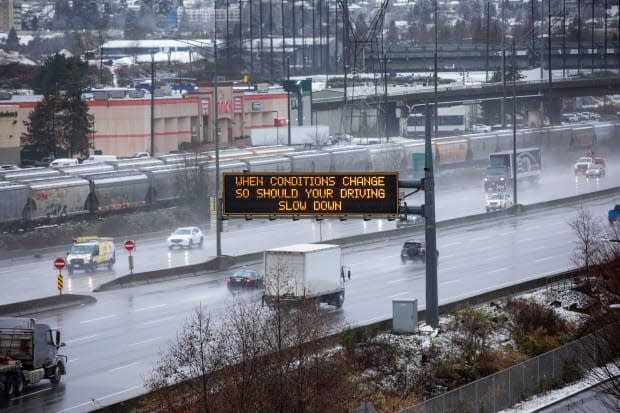Driving B.C. home: Behind the scenes at the province's transportation management centre
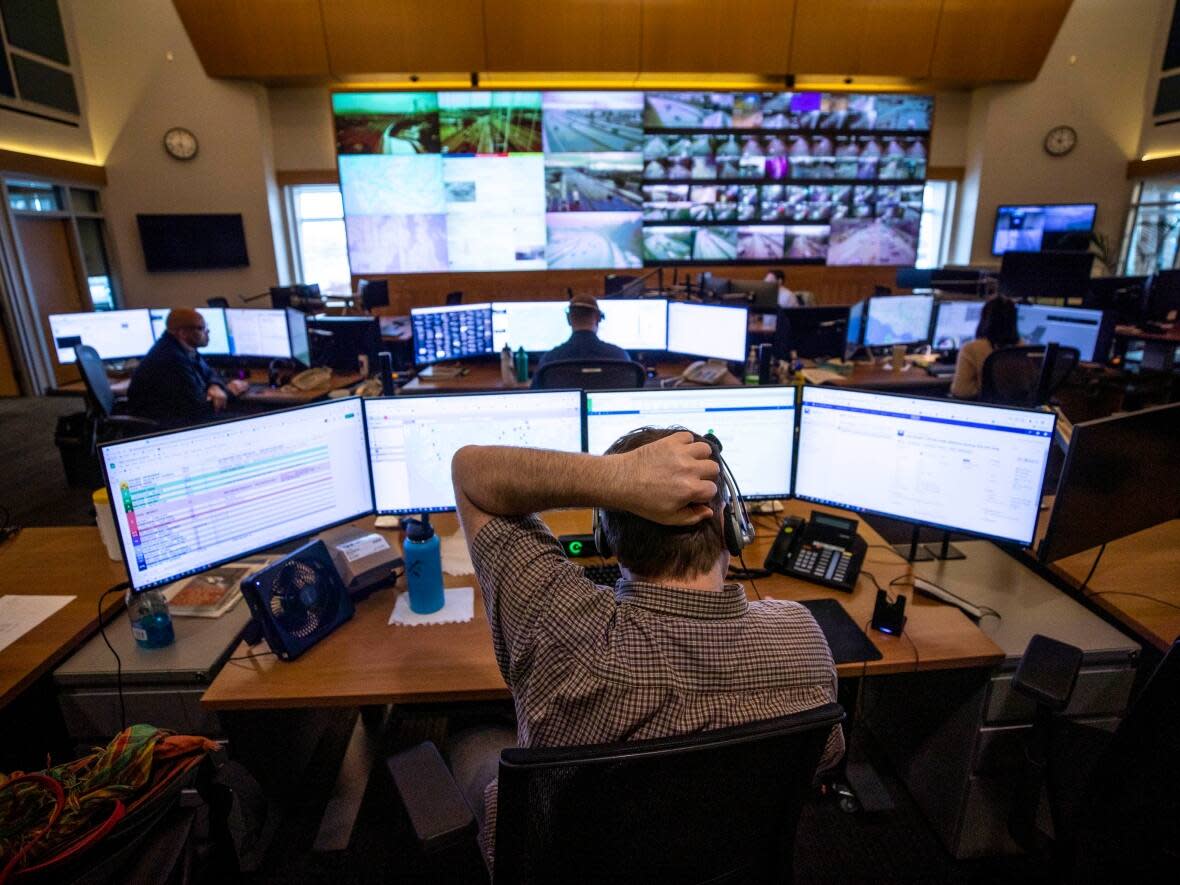
It's a snowy day in December, one month after historic rain and flooding caused chaos on B.C.'s highway network, and government agencies are issuing further travel and weather warnings.
But at the headquarters of DriveBC, a communications arm of the Ministry of Transportation that provides up-to-date road and travel information for drivers province-wide, all seems calm.
Since a series of storms in mid-November destroyed at least 200 sites on highways in the Lower Mainland and the Interior, government officials have been constantly reminding travellers to check DriveBC's website and Twitter accounts for the latest road news.
Inside the Transportation Management Centre (TMC) in Coquitlam, on the edge of the roaring Trans-Canada Highway, are the people working around the clock to help make that happen. And while the stakes are high, the energy is almost peaceful.
DriveBC may seem like an automated system, but it has TMC agents like Aidan Mouellic, who are responsible for pulling the trigger on tweets and changing the messaging on over 150 electronic traffic signs province-wide.
"Everything to do with DriveBC or Twitter — it's people behind it … just trying to get everyone home safely," said Mouellic.
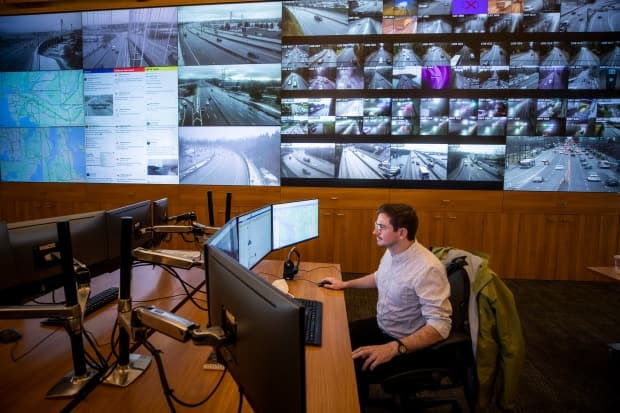
Three agents are on shift, working in almost total silence in a dimly-lit, Batcave-like control room alongside Ministry of Transportation contractors who are operating the lanes on the Lions Gate Bridge and the Cassiar and Massey tunnels.
An entire wall is covered in live feed from multiple traffic cameras beaming onto a massive screen. In total, there are about 380 highway cameras strategically positioned around B.C.
Not only are agents watching this feed, they are also constantly communicating with road maintenance contractors, Ministry of Transportation staff and first responders to make sure the information they are putting out is current and accurate.
"Because B.C. is so vast, if you tell someone that a highway is closed and you're wrong, you can detour someone for hours," said Porya Khorsandi, supervisor.
And sometimes, lives and livelihoods hang in the balance.

Mouellic's first day on the job was July 7, 2017, the same day the province declared a state of emergency as raging wildfires tore through the Interior.
"People didn't have ways out of their towns. Williams Lake, for a moment, had no highways that were actually open and people were reaching out and asking us, 'Where can we go?'" he recalls. "Unfortunately, we had to tell them to shelter in place."
An "overwhelming" experience, Mouellic said the fires did renew his faith in Twitter, which acted as a critical lifeline for people in need.
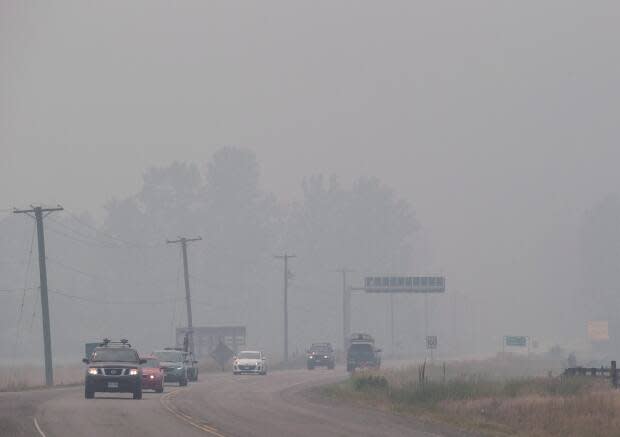
The social media platform was also a go-to tool in mid-November, when floods and fatal mudslides wreaked havoc on B.C. highways and thousands of residents in the southern Interior and Fraser Valley were forced to evacuate.
Those first flood days were a buzz of activity that is now a bit of a blur for Mouellic.
"It's been extremely surreal," said Mouellic. "Opening up one of our cameras and seeing just Highway 1 in Abbotsford being a lake, it's still kind of hard to comprehend."
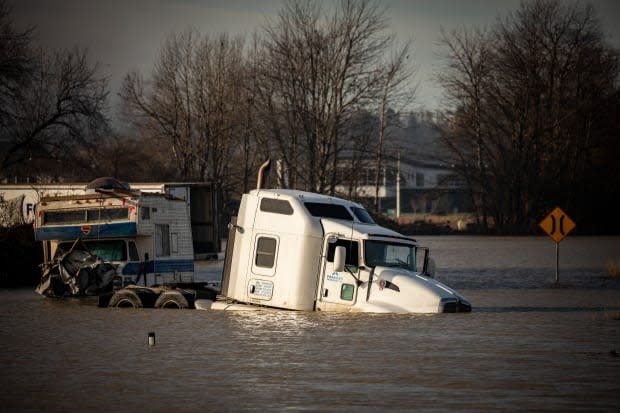
He said it can also be hard to comprehend what people are going through from the comfortable cocoon of the centre. But even in this safe space, he cannot escape the emotional realities of what happens on B.C. roads. And bridges.
According to graduate research done in 2019 by then University of British Columbia student Dylan Stephanian, one person attempts suicide by jumping from a bridge in the Lower Mainland every 14 days.
Sometimes, agents catch someone on camera and send help before it's too late. But not everyone is so lucky.
"I've personally seen scenes that have been extremely distressing," said Mouellic, who said previous experience working crisis lines has helped with this aspect of the job.

Khorsandi repeats a few times how proud he is of his team, who, in the face of fatalities, fires and floods, have sprung into action to help keep freight, first responders and people fleeing danger moving.
Now, the holiday season is here and the provincial government is already urging British Columbians to prepare for winter storms and dangerous driving conditions between now and New Year's Day.
While people pour eggnog, colleagues of Mouellic will be poring over highway cameras, trying to navigate travellers safely through a highway network still in various states of disrepair.
And since the floods, Khorsandi says operations have had to ramp up at the centre as more people are turning to DriveBC to guide them than ever before. "We've woken up the beast," he said.
It's a good thing DriveBC never sleeps.
